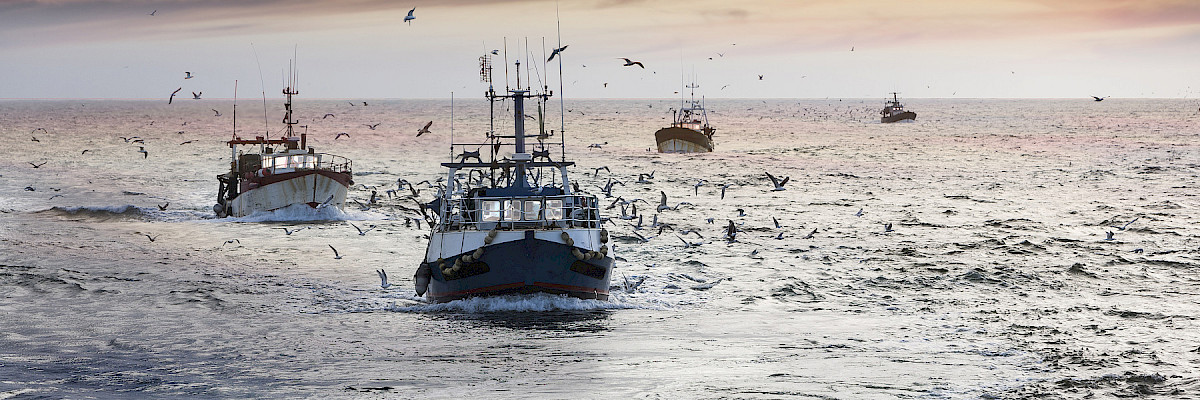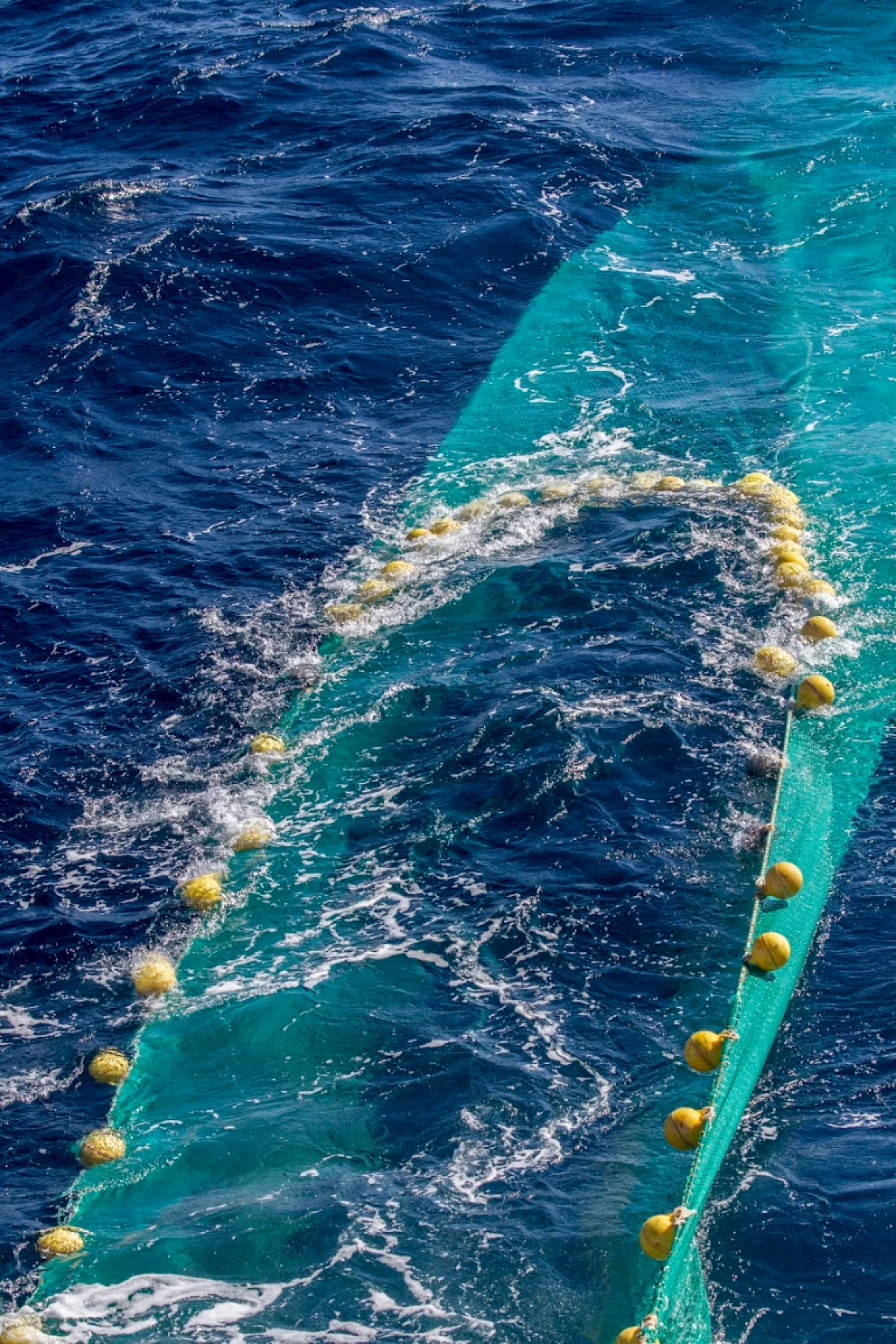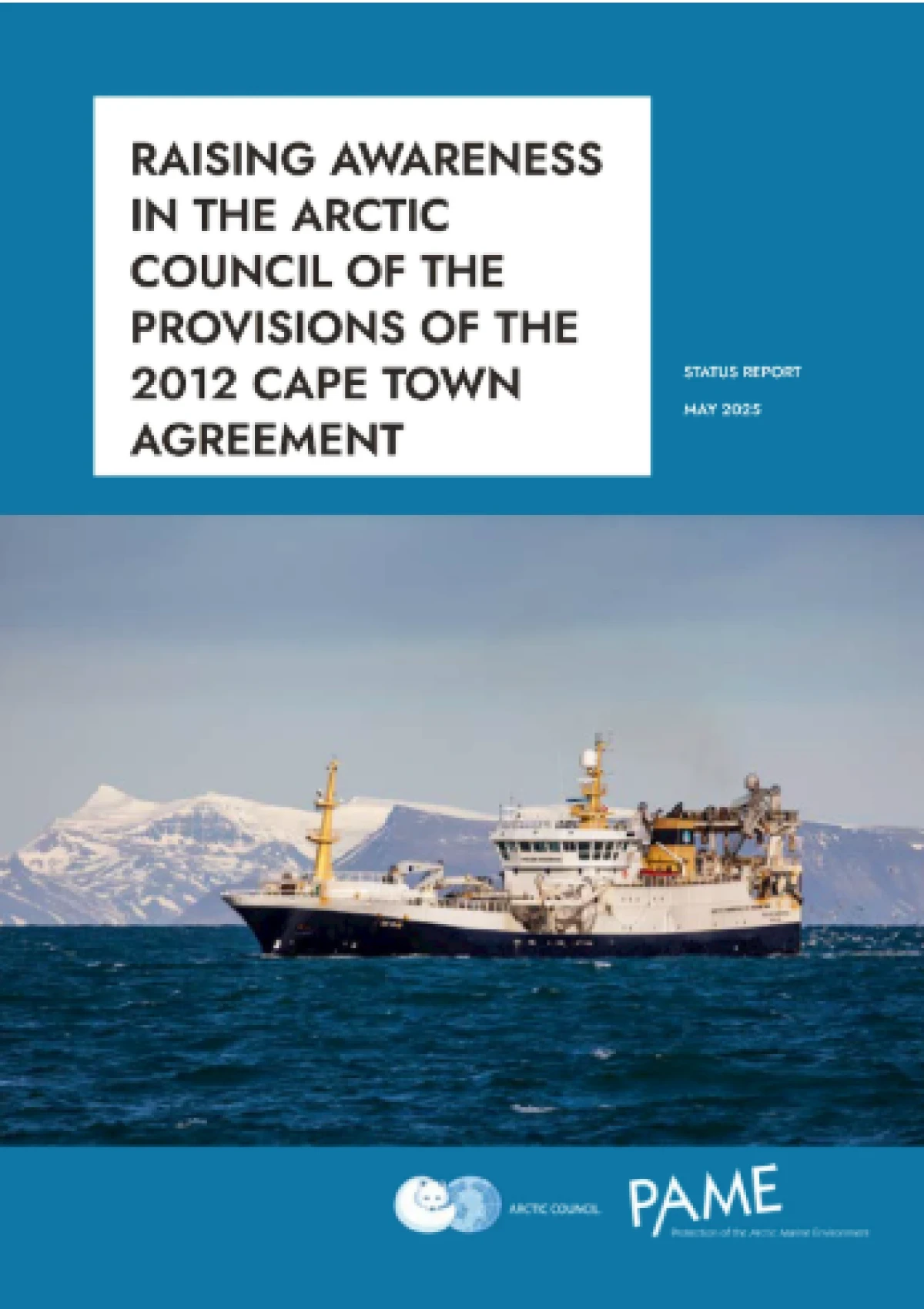
2012 Cape Town Agreement
Raising awareness in the Arctic Council of the provisions of the 2012 Cape Town Agreement
In 2021 PAME's ’Raising awareness in the Arctic Council of the provisions of the 2012 Cape Town Agreement Project’ (PAME CTA Project) was developed in order to assist with worldwide efforts, led by the IMO Secretariat, to achieve the entry into force criteria of the CTA, recognizing the importance of its benefits to the Arctic, given fishing vessel activity trends in the region, as well as its importance on a global basis.
The total number of fishing vessels in the world is estimated at around 4.6 million. Most of these are small vessels. Some 64,000 fishing vessels of 24 metres in length and over operate in marine waters. Approximately two million people work in the global shipping sector, an industry that is highly regulated by instruments such as the International Convention for the Safety of Life at Sea (SOLAS), a multilateral treaty aimed at ensuring that signatory flag States comply with safety standards.
By comparison, around 38 million people are estimated to be engaged in capture fisheries.
Provisions in treaties such as SOLAS generally do not apply to fishers or fishing vessels. SOLAS includes a number of regulations which are applicable to all ships, such as SOLAS Chapter V on safety of navigation. However, many other SOLAS regulations provide an exemption for fishing vessels.
A progress report from 2025 is available here.
Progress from 2021
The Project Co-leads have met on multiple occasions since 2021, online, and also in person in Iceland and at IMO in London.
A correspondence Group has been established, which has met on 5 occasions progressing the work of the Project, including:
- Assembling information on fishing vessels activity in the Polar Regions in order to contribute to the Summary report, including an ASTD analysis of fishing vessel activity.
- Developing a Questionnaire template for Artic States and Observer States to fill in order to help identify:
- Information on challenges Arctic States and Observer States had/may have in ratifying the Agreement
- Information on national legislation that may be considered to cover wholly or partially the provisions of the Agreement; an
- An overview of such challenges and national legislative information with suggestions for a way forward.
- To date, the Template has been completed by Spain, Iceland, Faroe Islands, Norway, United Kingdom, Canada.
- Discussing Issues regarding implementation amongst the Group to Assist States involved in moving national issues forward regarding the CTA. For example, Faroe Islands have now joined the Agreement and submitted their fishing vessel numbers, and UK have completed the Template and are imminently ratifying the Agreement in the UK Parliament.
- The Co-leads, with the assistance of nominated experts on the Group have helped with the international momentum towards meeting the implementation criteria, in highlighting the Project in a dedicated Panel Session both at the 31 October – 01November 2022 Polar Maritime Seminar and the 23rd-24th January 2025 Polar Maritime Seminar.
PAME CTA Project List of Tasks/Activities:
- To establish a Correspondence Group;
- Develop an Arctic Shipping Status Report (ASSR) on fishing vessel activities in the Arctic with its project co-leads;
- Develop a Summary Report that includes the findings from the ASSR Report, and highlights the provisions of the Cape Town Agreement for the Safety of Fishing Vessels, that includes:
- Information on challenges Arctic States or Observer States may have had in ratifying the Agreement;
- Information on national legislation that may be considered to cover wholly or partially the Agreement; and
- An overview of such challenges and national legislative information with suggestions for a way forward.
- The summary report will be presented to PAME for consideration.
- Convene an online webinar for PAME Members and interested Arctic Council Working Groups where States share their experience, and challenges that may have been identified.
Next Steps
- To convene a further meeting of the Correspondence Group to progress the project aims, including further completions of the Template Questionnaire, further gathering of fishing vessels data / analysis in the Arctic Region, in order to contribute to the development of the final Summary Report.
- To identify a date for the Projects Webinar, in order to maintain momentum regarding the overall drive for implementation of the CTA, at this critical juncture, and thereafter contribute further to the final Summary Report
The total number of fishing vessels in the world is estimated at around 4.6 million. Most of these are small vessels. Some 64,000 fishing vessels of 24 metres in length and over operate in marine waters.
Approximately two million people work in the global shipping sector, an industry that is highly regulated by instruments such as the International Convention for the Safety of Life at Sea (SOLAS), a multilateral treaty aimed at ensuring that signatory flag States comply with safety standards.
By comparison, around 38 million people are estimated to be engaged in capture fisheries. Provisions in treaties such as SOLAS generally do not apply to fishers or fishing vessels. SOLAS includes a number of regulations which are applicable to all ships, such as SOLAS Chapter V on safety of navigation. However, many other SOLAS regulations provide an exemption for fishing vessels.
Fishing is one of the most dangerous professions in the world. It is estimated that approximately 80 lives are lost per 100,000 fishers on average.
Data from PAME has recently highlighted the increased number of fishing vessels in the Arctic. The safety of fishing vessels and their crew is of utmost importance, especially in the unique environmental and hazardous navigational conditions of the Arctic.

Entry into Force Criteria for the Cape Town Agreement
The treaty will enter into force 12 months after at least 22 States, with an aggregate 3,600 fishing vessels of 24 m in length and over operating on the high seas have expressed their consent to be bound by it.
At the outset of the PAME CTA Project, 15 countries had ratified the Agreement, including the Arctic States of Denmark, Iceland, Finland and Norway; the Arctic Council Observer States of France, Germany, Netherlands and Spain, in addition to Belgium, Cook Islands, Congo, Saint Kitts and Nevis, Sao Tome and Principe, South Africa, and Croatia.
The aggregate number of fishing vessels in these States that are covered under the requirement for the entry-into-force is 1433. Accordingly, at least 7 further States were required with an aggregate number of vessels of no less that 1167 vessels to meet the entry in force criteria, at the outset of the PAME CTA Project in 2021.
Current Status of CTA Implementation
The PAME CTA Project, as highlighted at the 23rd – 24th January 2025 Polar Maritime Seminar, has helped with the momentum towards meeting the entry into force criteria of the Agreement.
The current position, as of Februaty 2025, is that 23 States have ratified the Agreement, meaning that the threshold of 22 States has been met. However, the requirement for an aggregate of at least 3600 vessels has not been met. The aggregate number at present is 2935. Accordingly, 665 vessels are required. Given UK’s imminent ratification it is expected that over 200 vessels will be submitted to IMO by UK reducing the entry in to force requirement to under 465 fishing vessels.
Summary of Benefits of Cape Town Agreement for Arctic States
While it is acknowledged and understandable that some States may face hurdles in the legislative process limiting their ability to ratify the Agreement, the knowledge already acquired by States who have ratified the Agreement, or who are in the ratification process would be extremely valuable for those States, as well as being of great assistance for all States in terms of lessons learned. This project would aim to highlight that experience, as well as the guidelines currently being developed.
1
Protect Arctic State rescue services from being called out unnecessarily to substandard fishing vessels
2
Save lives in the fishing industry and improve working conditions;
3:
Help create internationally-binding safety standards applicable to foreign registered fishing vessels, giving ‘Port State Control’ ability to binding States to check fishing vessels for safety measures to prevent incidents in Arctic waters. The Agreement has a “no more favorable treatment” clause which means that all vessels entering a port of a State that is a party to the Agreement would be subject to the same inspection standards - even if their flag State has not ratified or acceded to it. This allows States to control all vessels entering their ports, raising global safety standards; and
4
Help reduce plastic waste from fishing vessels ending up in Arctic waters, through implementation of the safety measures. In particular, abandoned, lost or otherwise discarded fishing gear accounts for up to 13-15% of total plastics in our ocean and due to world ocean currents much waste has accumulated in the Arctic. From the limited analysis thus far of macro-litter washed ashore on Arctic beaches or accumulating on the seafloor, most (50-100%) can be attributed to fishing activity, such as nets, floats and other debris.
Lead Working Groups
PAMELead Arctic States & Permanent Participants
IcelandEngaged observers
International Maritime Organization (IMO)Spain
 Arctic Council Working Group
Arctic Council Working Group 